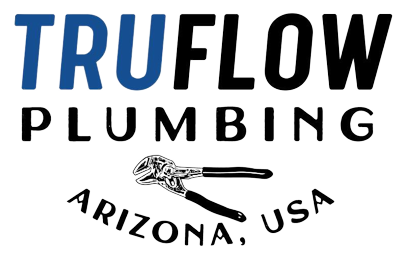Did you know that nearly 10% of homes in the United States have leaks that waste 90 gallons or more per day? Plumbing issues are a common problem for homeowners. They often come from old fixtures and misuse. Leaky pipes are a big concern among these problems.
Leaky pipes can happen for many reasons. These include clogs, wrong pipe laying, corrosion, damaged joints, and cracks. They can also be caused by too much water pressure. These issues not only waste a lot of water but can also damage your home and plumbing system if not fixed quickly.
It’s important to know the signs of pipe damage. Getting help from experts like TruFlow Plumbing can solve these problems. This ensures your plumbing system works well and lasts long.
Key Takeaways:
- Nearly 10% of U.S. homes have significant leaks, wasting 90+ gallons daily.
- Leaky pipes are among the most common plumbing pipe problems faced by homeowners.
- Key causes include pipe corrosion, clogs, damaged joints, and high water pressure.
- Early recognition of the signs of pipe damage can prevent extensive home damage.
- Professional help ensures durable and efficient home plumbing systems.
Understanding Leaky Pipes
Leaky pipes are a common problem. They can cause financial and structural damage if not fixed quickly. Causes include wear and tear, corrosion, bad installation, and too much pressure. Knowing the cause is key to fixing leaks.
Experts say it’s important to find out why pipes leak. Tools like a drip calculator help show how much leaks cost. This shows why fixing leaks fast is important.
Common Causes of Leaky Pipes:
- Clogs leading to increased pressure and eventual leaks.
- Corrosion eroding pipe integrity.
- Damage at joints due to poor installation or vibrations.
- Material fatigue from sustained pressure over time.
Knowing these causes helps homeowners fix and prevent leaks. This keeps plumbing systems working well for a long time.
Common Causes and Solutions for Plumbing Pipe Issues
Plumbing pipe problems can show up in many ways. Each one needs its own fix. Knowing what causes these issues and how to solve them can keep your pipes working well. Let’s look at the main reasons for pipe troubles and how to fix them.
Pipe Corrosion Prevention
Pipe corrosion makes pipes weak and more likely to leak. To stop corrosion, choose pipes made from materials like copper or PVC. These materials resist rust and decay well. It’s also important to keep the water flowing through your pipes at the right pH level.
Regular checks can spot corrosion early. This lets you fix problems before they get worse. Following these tips can make your plumbing last longer.
Pipe Blockage Solutions
Pipe blockages are common. The best way to avoid them is to not throw things like oils, hair, and other debris down the drain. Using drain strainers can also stop big particles from getting stuck. Clean your drains regularly with baking soda and vinegar to keep them flowing.
If a blockage is really bad, plumbers might use hydro-jetting. This method clears the pipes well and gets water flowing again.
Pipe Burst Prevention
Stopping pipe bursts is key to avoid expensive repairs. Frozen pipes, corrosion, and high water pressure are the main causes. To stop pipes from freezing, make sure they’re well-insulated, which is important in cold areas.
Using valves to control water pressure can also help. Replacing old or corroded pipes is another way to prevent bursts. These steps are important for keeping your home safe from water damage.
Conclusion
Keeping plumbing systems in good shape is key to a safe and working home. If you see signs of pipe damage, act fast to avoid dangers. Regular checks and quick fixes can solve many problems, like leaks, and keep your system running long.
Knowing why plumbing issues happen helps homeowners fix them. Fighting off corrosion, blockages, and bursts can stop big problems. Taking steps early on keeps your plumbing safe and working well.
It’s important for homeowners to keep an eye on their plumbing. Regular care and quick fixes help your plumbing last longer and avoid big costs. By staying on top of maintenance and watching for damage signs, you can keep your plumbing reliable and your home safe.
